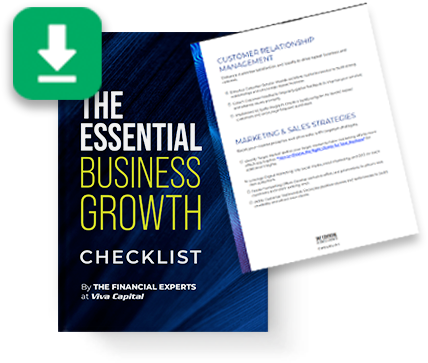
Trying to figure out how to improve your business score? Contrary to what some might say, you can’t actually build business credit in 30 days—not if you’re trying to move from no credit or bad credit to an upper-tier rating. However, you can lay the foundation to build credit fast and start moving the needle in the right direction within that timeframe. Below, we’ll go over some basic business credit tips and show you how to improve a business credit score quickly, so you can get to where you need to be in as little time as possible.
Building Business Credit 101
Before we break down how to boost a business credit score, let’s cover some of the fundamentals of business credit and how it works.
Why Are Business Credit Scores Important?
Your credit score plays a role in many aspects of your business. For instance, a business with a bad credit score is often seen as irresponsible, so it can be harder to qualify for insurance, and premiums tend to be higher.
Scores are used to determine creditworthiness too. This is true across the board for virtually all types of small business financing, including traditional business loans and trade credit. A great credit score can make lenders eager to work with you, increase the amount of credit they extend, and decrease your cost to borrow.
In other words, if you take steps to improve your business credit score, you’re more likely to get cash when you need it and pay less for that privilege. Knowing how to increase a business credit score is an imperative skill that leads to better outcomes for your company.
As a Business Owner, is Your Personal Credit Score Important?
Yes, a business owner’s personal credit score still matters sometimes. For instance, a sole proprietor or small business owner who hasn’t established business credit will often rely exclusively on a personal credit score when working with insurance companies, banks, and vendors.
However, sometimes institutions and suppliers will also weigh personal and business credit scores equally, and sometimes they’ll only look at the business score. There are no universal rules on which score is used. Local laws, the entity looking into your credit, the circumstances, and the business’s stage of growth can all factor into the decision.
What is a Good Credit Score?
The credit rating scale runs from 300-850 for personal and 0-100 for business, so the tiers are a little different too.
Personal Credit Score Ranges
- Low Risk: 740-850
- Moderate Risk: 670-739
- High Risk/ Subprime: 300-669
“Good credit” is typically defined as having a personal credit score between 670 and 739 per Equifax. People who fit into this bracket are moderately risky borrowers for lenders. They can often obtain credit, but the terms offered aren’t as good as those for low-risk borrowers. Anyone falling below this threshold will usually have trouble qualifying for credit.
Business Credit Score Ranges
- Low Risk: 80-100
- Moderate Risk: 50-79
- High Risk/ Subprime: 0-49
“Good credit” for a business typically means the score falls between 50 and 79. Again, this is the moderate risk category. Although it’s often possible to qualify for loans and insurance at this level, the terms are typically much better for those with a business credit rating of at least 80.
What is Your Business Credit Score Based On?
- Number of trade experiences/ payment experiences
- Outstanding balances
- Payment habits
- Credit utilization
- Trends over time
- Public records (recency, frequency, and dollar amount)
- Business demographics (years on file, Standard Industrial Classification codes, business size, etc.)
How to Improve Your Business Credit Score
Now that we’ve reviewed the background, let’s look at how to raise a business credit score.
1. Check Your Credit Report Regularly and Update Your Information
First and foremost, credit bureaus need to know that your business exists. The three main credit bureaus for business credit scores are Dun & Bradstreet, Equifax, and Experian. Reach out to each one and make sure they have your latest business information. It’s good practice to do this and obtain your business credit report annually, just like you should be doing with your personal score. That way, you can catch any errors or issues that impact your credit rating before anyone uses it to determine your creditworthiness or reliability. If you’re trying to build business credit, you can check it more but don’t expect major leaps on a month-to-month basis.
2. Pay Your Bills Early or on Time
Lenders want to know that your business has financial management nailed. A clean credit history, with no missed or late payments, is an indicator that you’re managing cash flow well and taking your financial obligations seriously.
Most people want to make their payments on time, but issues like rapid business growth and unexpected emergencies get in the way, and even one late or missed payment can reduce your score. If this is an area your business sometimes struggles with, try using cash flow forecasting to predict potential shortfalls and connect with an invoice factoring company or another rapid funding source, so you get working capital quickly whenever you need it.
It’s also worth noting that Dun & Bradstreet, one of the major credit bureaus, offers something called a PAYDEX score. This is something vendors may use to assess whether to extend trade credit. While the bureau contends it works like a FICO score for individuals, a few differences are worth noting. For instance, if you pay all your invoices exactly on the due date, the highest credit rating you can get is 80/100, Forbes reports. That still qualifies as “good” credit, but you’re going to want to pay some or all your invoices early to have a higher rating and likely improve the terms you’re offered. A second difference is that the size of the balance matters. You’ll get a bigger boost by paying a $5,000 invoice earlier than you would a $500 one. Equally, paying a $5,000 invoice late is going to hurt your credit rating more than paying a $500 invoice late.
3. Avoid “Public Records,” Liens, and Judgments
How, and if credit bureaus report judgments and liens have changed in recent years, as Experian explains.
Public Records
The only public records credit reports presently include are bankruptcies. Obviously, bankruptcy means you were unable to meet your financial obligations, so not only will your credit score drop drastically after filing, but you’ll be considered risky for many years after, even if you repair your credit score.
Liens and Judgments
Creditors place liens on assets to show they have a claim to them. They’re mostly used when an asset is used as collateral on a loan. This is referred to as a consensual lien. You and the lender agree they have a claim to the asset until your debt is cleared. A common example of this occurs with mortgages. The property serves as collateral on the loan. The lender can liquidate the property if you don’t pay. This type of lien doesn’t appear on credit reports, but the loan, itself, does.
Involuntary liens are the second type. These are issued by a court.
- Tax Liens: A tax lien may be placed on your property if you fail to pay state or federal taxes.
- Mechanic and Construction Liens: A contractor or subcontractor can request that a lien be placed on the property they worked on if they’re not paid for the work.
- Judgment Liens: A judgment may be issued if a creditor can prove that you defaulted on an agreement and owe them money.
As of 2018, these liens are also no longer included in credit reports, per Experian. However, non-payment on the loan involved will most likely be. Entities interested in your fiscal responsibility and those considering using an asset as collateral in your loan may also run searches for liens independent of reviewing your credit report. Consensual liens aren’t usually a problem, provided you’re not trying to use the same asset as collateral for multiple loans, but involuntary leans may be grounds for denial.
4. Monitor Your Credit Usage and Keep Credit Utilization Low
Revolving credit can be a double-edged sword. Creditors look at your available credit and the percentage used. Ideal borrowers utilize no more than 30 percent of their available credit. For this reason, it’s best to pay your balance in full each month and keep an eye on your utilization to ensure you don’t exceed 30 percent.
There are tricks to get around this, but most have pitfalls.
- New Card: you can open a new business credit card to increase your total available credit and get yourself below 30 percent. However, this can decrease the overall age of your accounts, which can be damaging too.
- Loan: A second tactic is to take out a traditional loan and use that to pay off revolving credit. It’s often a better solution, but it still impacts your debt ratio, and it can be difficult to get a loan once you’ve surpassed 30 percent credit utilization.
- Debt-Free Funding: Some funding methods, such as invoice factoring, don’t create debt. Instead, the factoring company buys your invoices at a discount. You get immediate cash, and the factor receives payment when your client pays. As a result, you’re accelerating payment on your accounts receivable rather than taking on debt.
5. Establish Trade Lines with Your Suppliers and Vendors
When we talked about factors that impact your credit earlier, “trade experiences” and “payment experiences” were listed first. This is just an industry-specific way of referring to payments made to a “trade reference,” further defined as “a source that supplies commercial payment information” by Dun & Bradstreet.
In short, partner, lender, and supplier payments can be reported to credit bureaus. You can ask anyone you have a payment history with to submit your info or look for options like Dun & Bradstreet’s CreditBuilder product that may allow you to submit the information yourself.
Vendor financing options also serve another benefit: they don’t usually show up as revolving credit or debt on your credit report. Although companies digging into your business finances will still see invoices owed, your report will have lower credit utilization and suggest a lower debt ratio, which can help you get approved for financing if you need it.
Start Boosting Your Business Credit with Factoring from Viva
Invoice factoring makes it easier to keep up with payments, can help you avoid getting into debt, and can keep your credit utilization lower, so it’s a very powerful tool when you’re trying to improve your business credit score. Request a complimentary rate quote to learn more or get started.
- 6 Proven Customer Retention Tips to Drive Long-Term Loyalty - June 4, 2025
- 5 Key Traits of a Top Factoring Company (And How Viva Stacks Up) - May 22, 2025
- The Impact of Late Payments: How Factoring Protects SMEs - April 11, 2025



